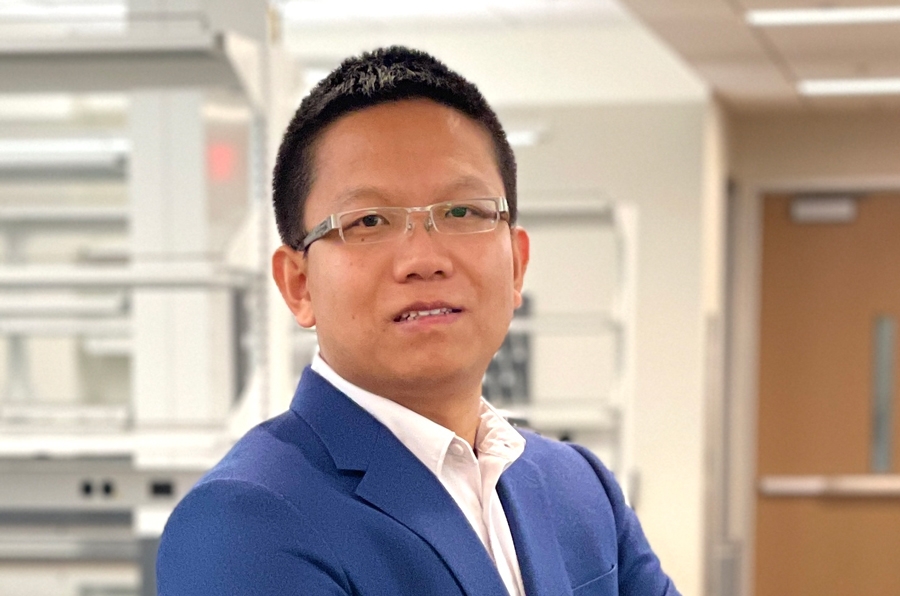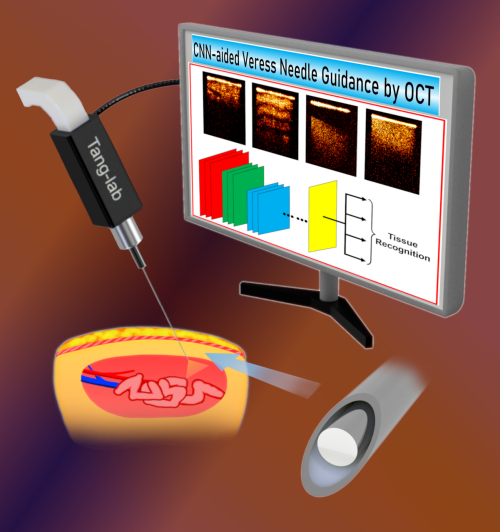 Editor's Note: OU Engineering faculty are bringing unprecedented success to the Gallogly College of Engineering at the University of Oklahoma. In 2023, the National Science Foundation announced that six engineering faculty received an Early Career Development Award (CAREER) that recognizes junior faculty who have the potential to serve as academic role models in research and to learn research advances.
Editor's Note: OU Engineering faculty are bringing unprecedented success to the Gallogly College of Engineering at the University of Oklahoma. In 2023, the National Science Foundation announced that six engineering faculty received an Early Career Development Award (CAREER) that recognizes junior faculty who have the potential to serve as academic role models in research and to learn research advances.
Qinggong Tang, Ph.D., an assistant professor in Stephenson School of Biomedical Engineering, has received a prestigious CAREER award through the Faculty Early Career Development Program of the National Science Foundation. The five-year project will develop novel endoscopic optical imaging techniques to provide real-time visualizations to improve clinicians’ ability to successfully administer needle-based medical interventions.
Many health treatments require medication delivery through injection, called needle-based interventions. Some examples include the delivery of anesthesia, a tumor biopsy or a pregnant woman receiving an epidural during labor. Although quite common, needle-based interventions require absolute precision during administration. Currently, practitioners rely on X-ray or CT ultrasounds to guide needle placement, but these methods do not provide details about the depth of tissue, ligament, muscle or fat beneath the skin that can impact the efficacy of these interventions.
“With current methods, doctors can see the needle tip, but they cannot see the different tissue types. With an epidural, for example, there is not a precise way to ensure the needle reaches the epidural space, which is surrounded by blood vessels and can be dangerous if punctured,” Tang said. “By developing our novel imaging technology to guide this procedure, we can improve the precision of needle placement.”
 Tang’s research group has developed a kind of miniaturized imaging device small enough to be placed on the tip of a needle, that combined with artificial intelligence and machine learning software could allow clinicians to see a computer read-out of the types of soft tissues ahead of the needle tip before penetration.
Tang’s research group has developed a kind of miniaturized imaging device small enough to be placed on the tip of a needle, that combined with artificial intelligence and machine learning software could allow clinicians to see a computer read-out of the types of soft tissues ahead of the needle tip before penetration.
“There will be broad applications for needle-based interventions used in brain surgery, for tumor-related or laparoscopic surgeries – all could benefit from our tool to provide precise guidance and avoid hemorrhage,” he said.Additionally, with the support of OU’s Precollegiate, Engineering Diversity, Equity and Inclusion, and Engineering Pathways programs, Tang will develop a “Biophotonics for Native Americans in Oklahoma” program to engage and mentor local Native American high school students and teachers in biomedical engineering and optics.
“This effort will enable Native American students to access the world-class research facilities at the University of Oklahoma and encourage more Native American representation in STEM,” he said. “Other educational activities, including curriculum development and specific microscope demonstrations for local K-12 students, will be organized to increase students’ interest in bioimaging.”
About the Project
"CAREER: Intelligent multi-contrast imaging platform for needle-based interventions" is funded by the National Science Foundation, award no. 2238648. The project begins April 1, 2023, and is estimated to end March 31, 2028.
By Chelsea Julian, Office of the Vice President for Research and Partnerships